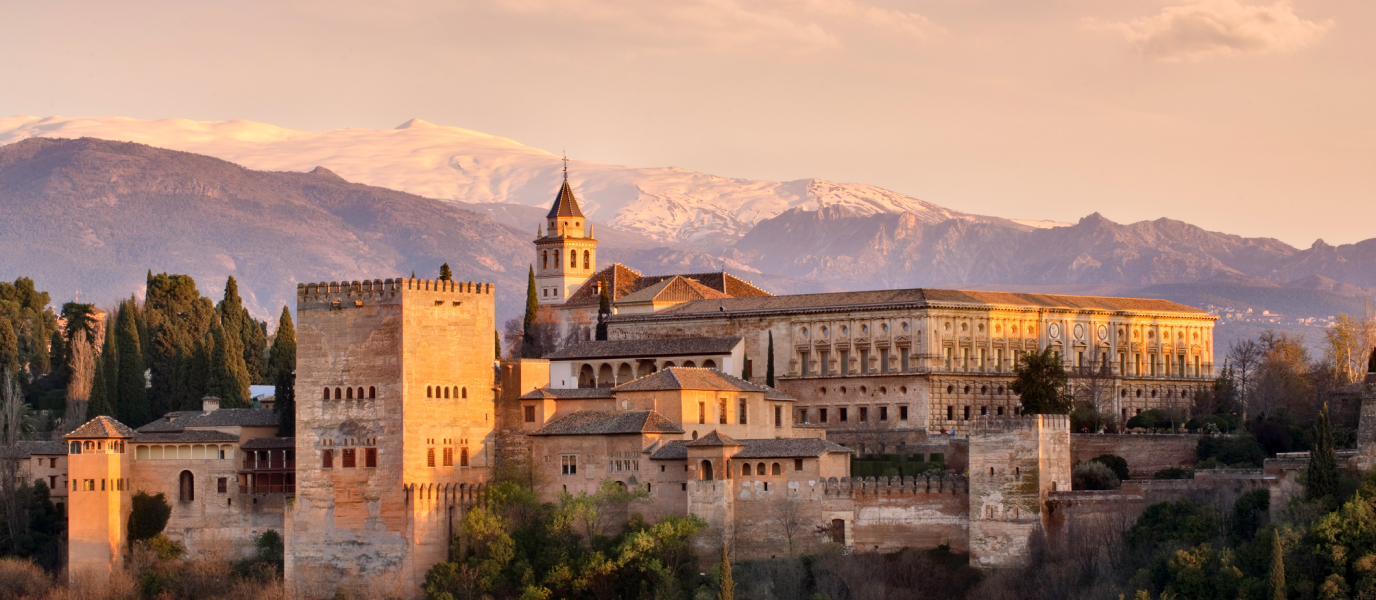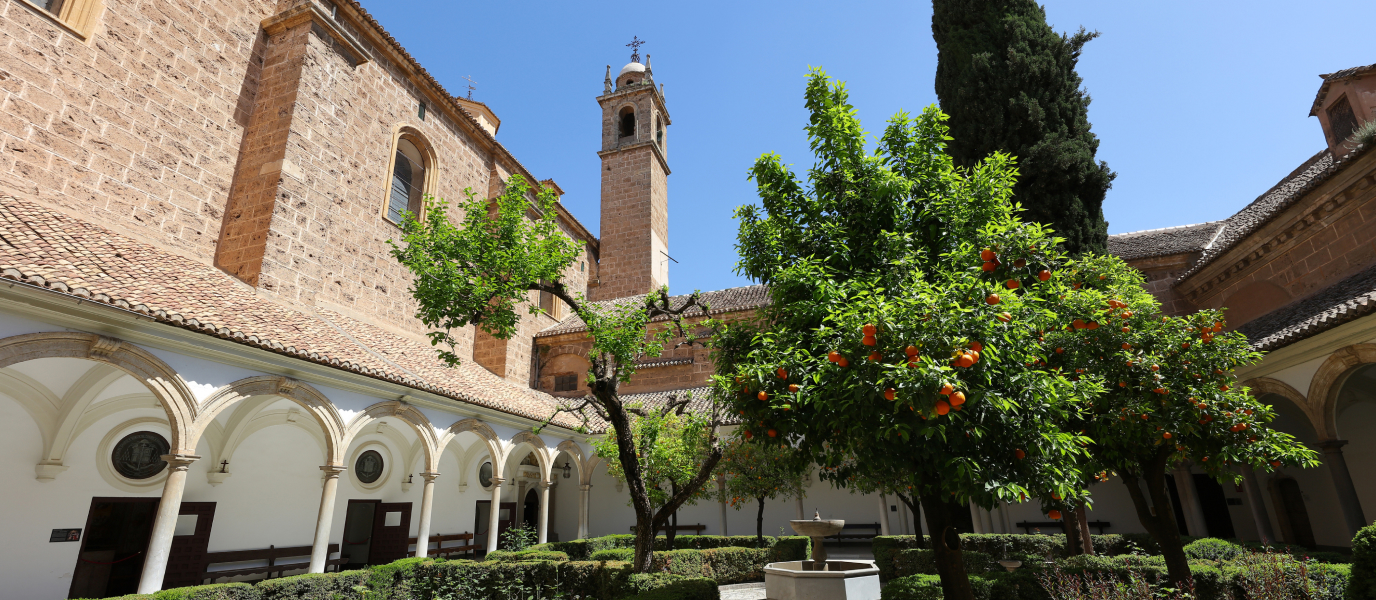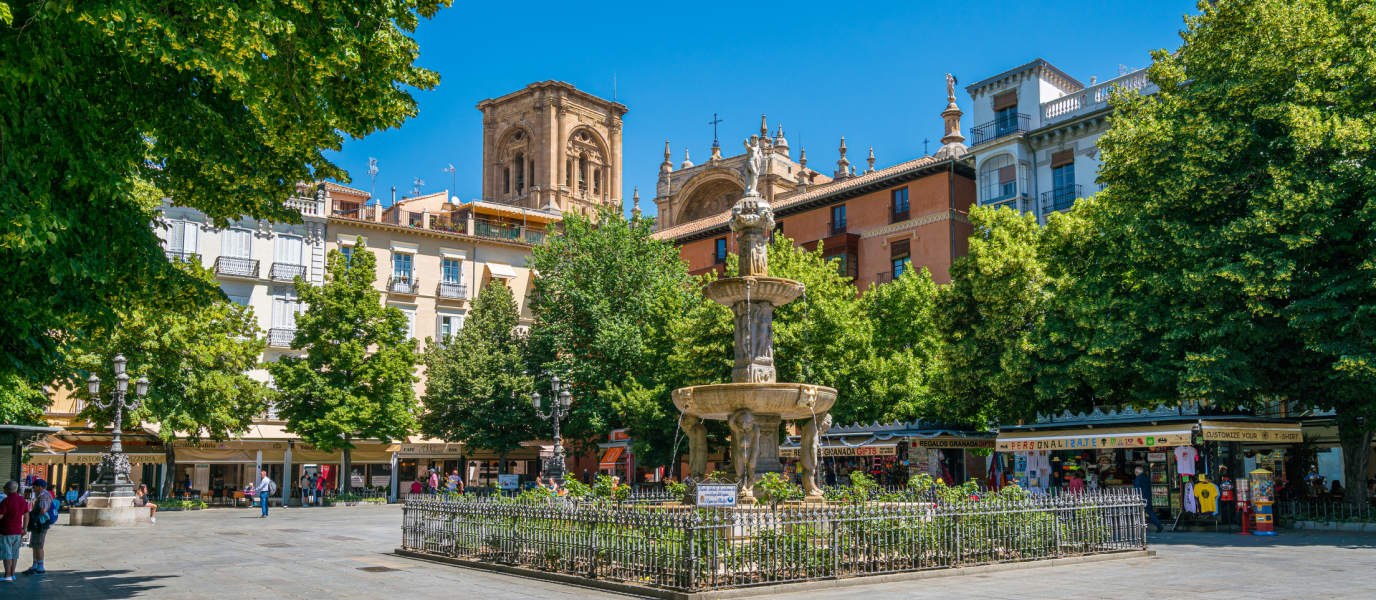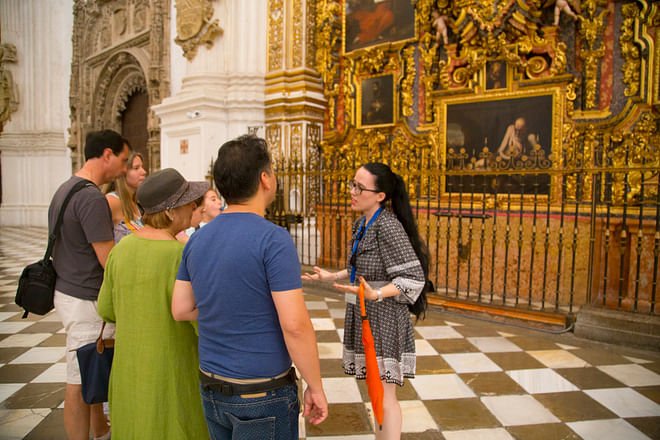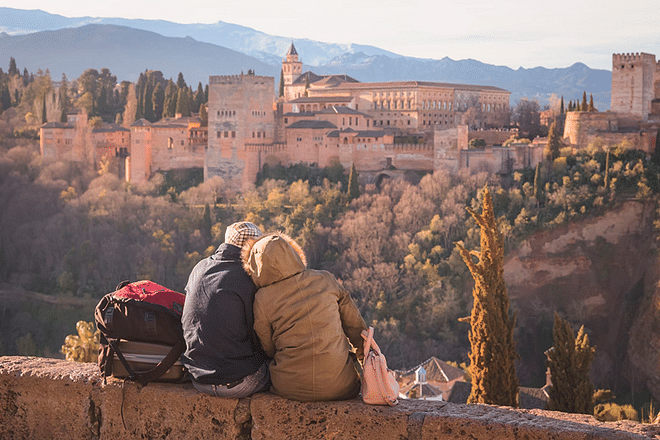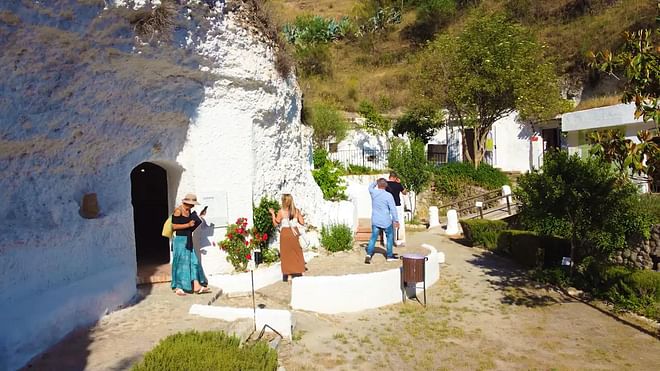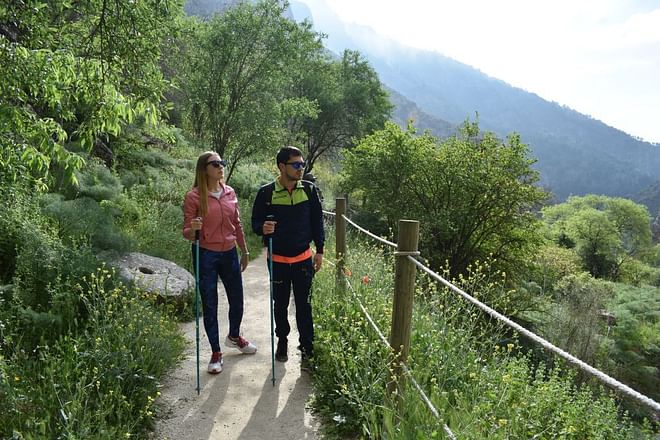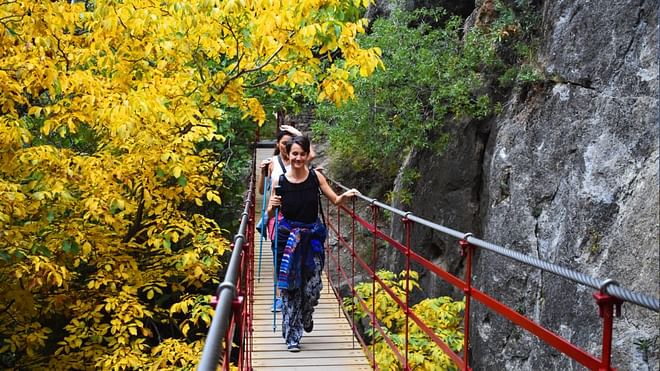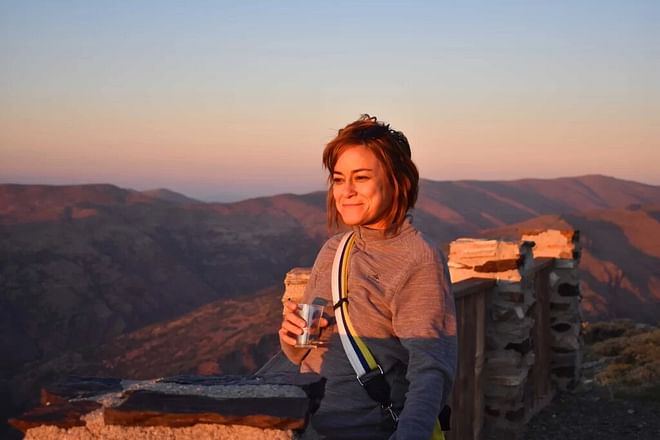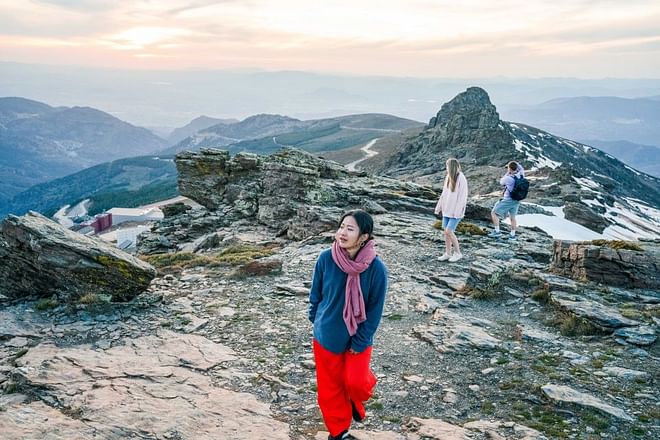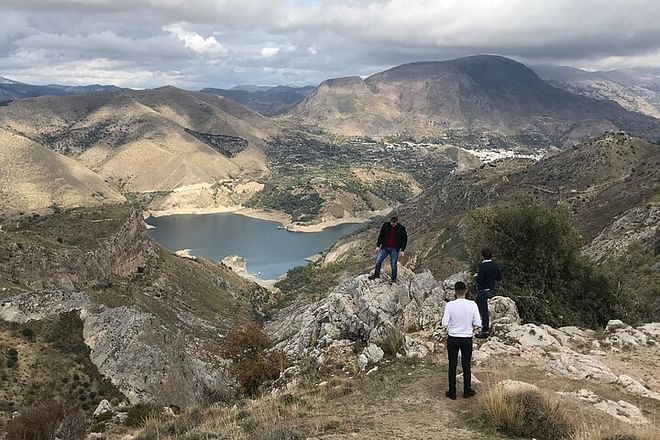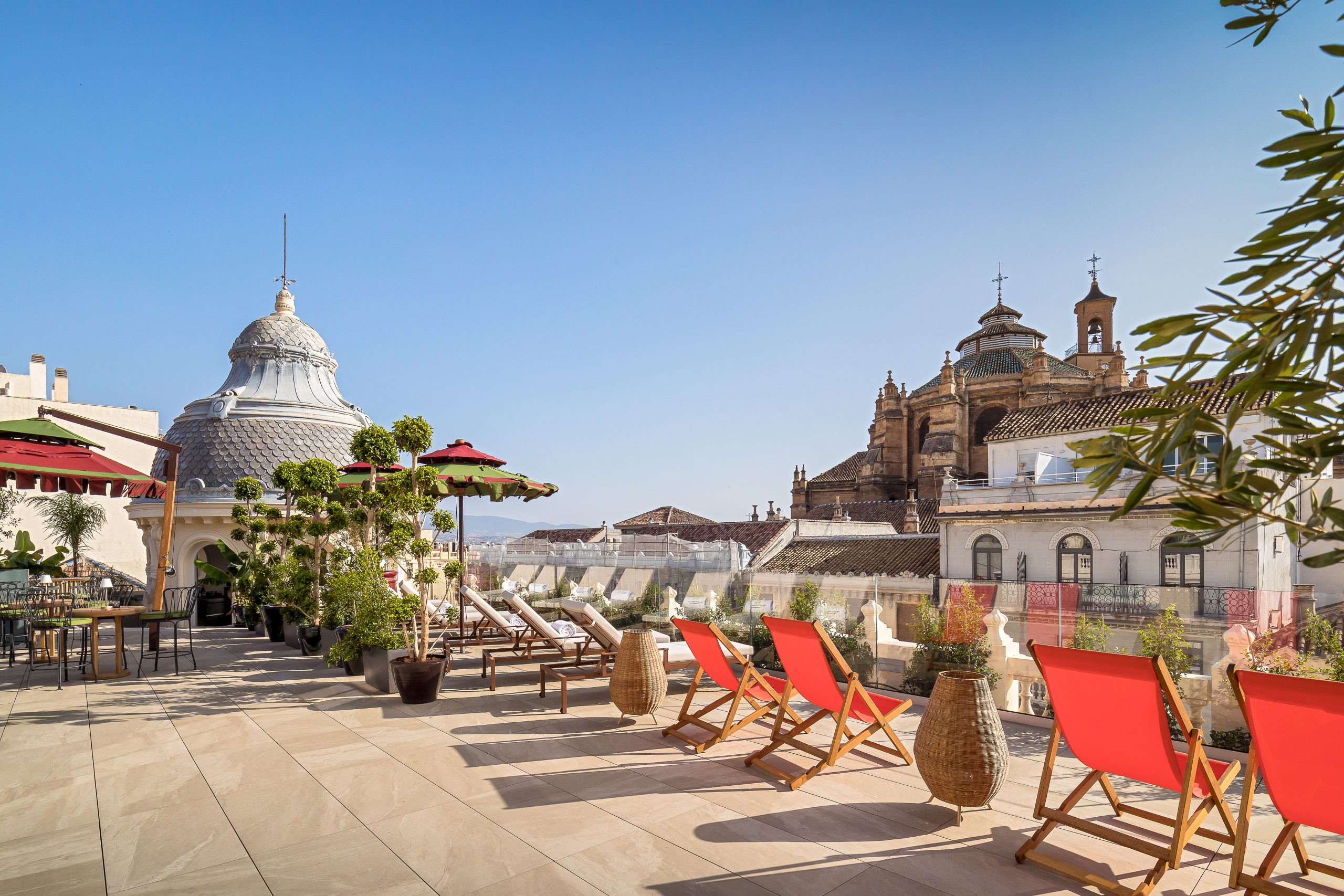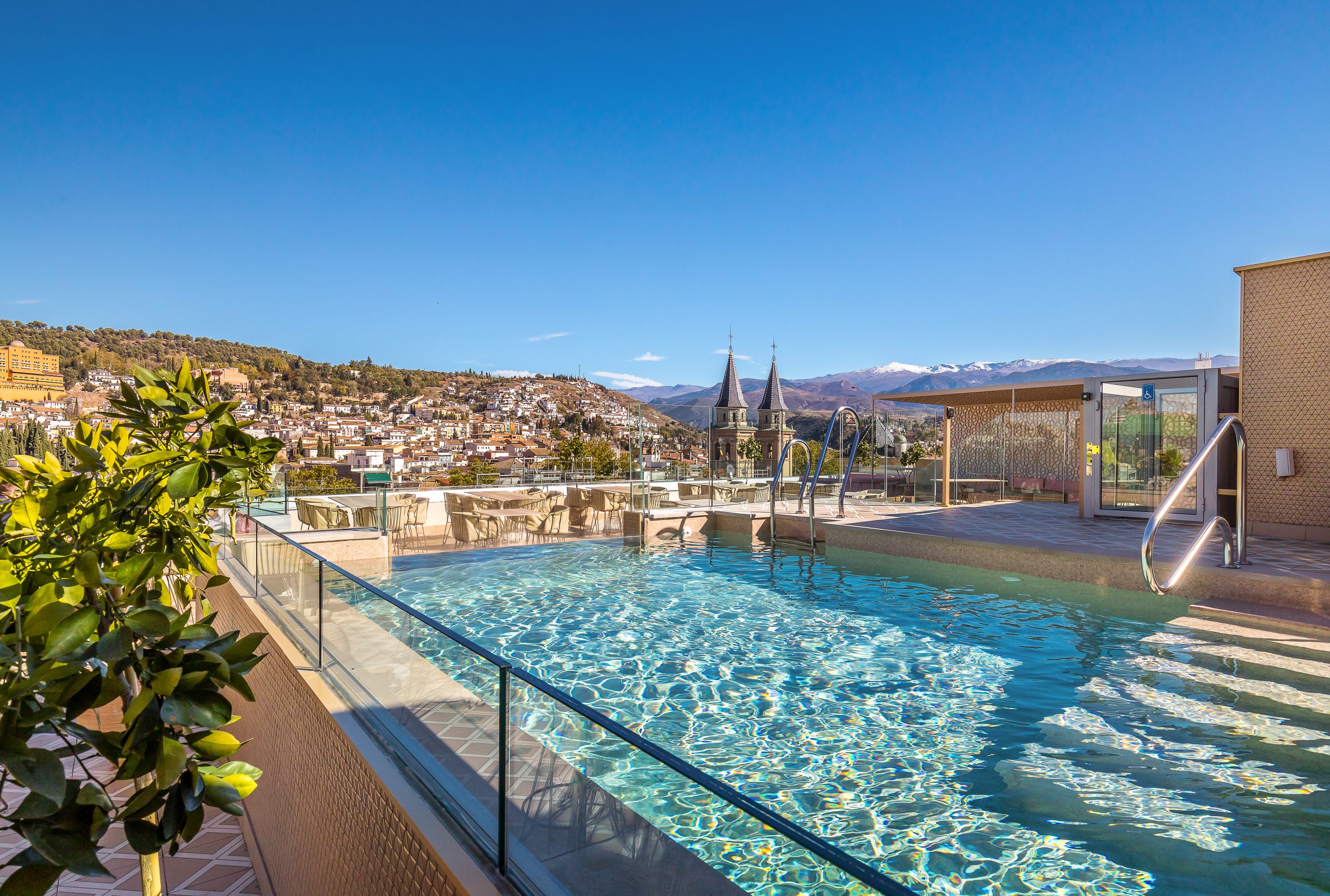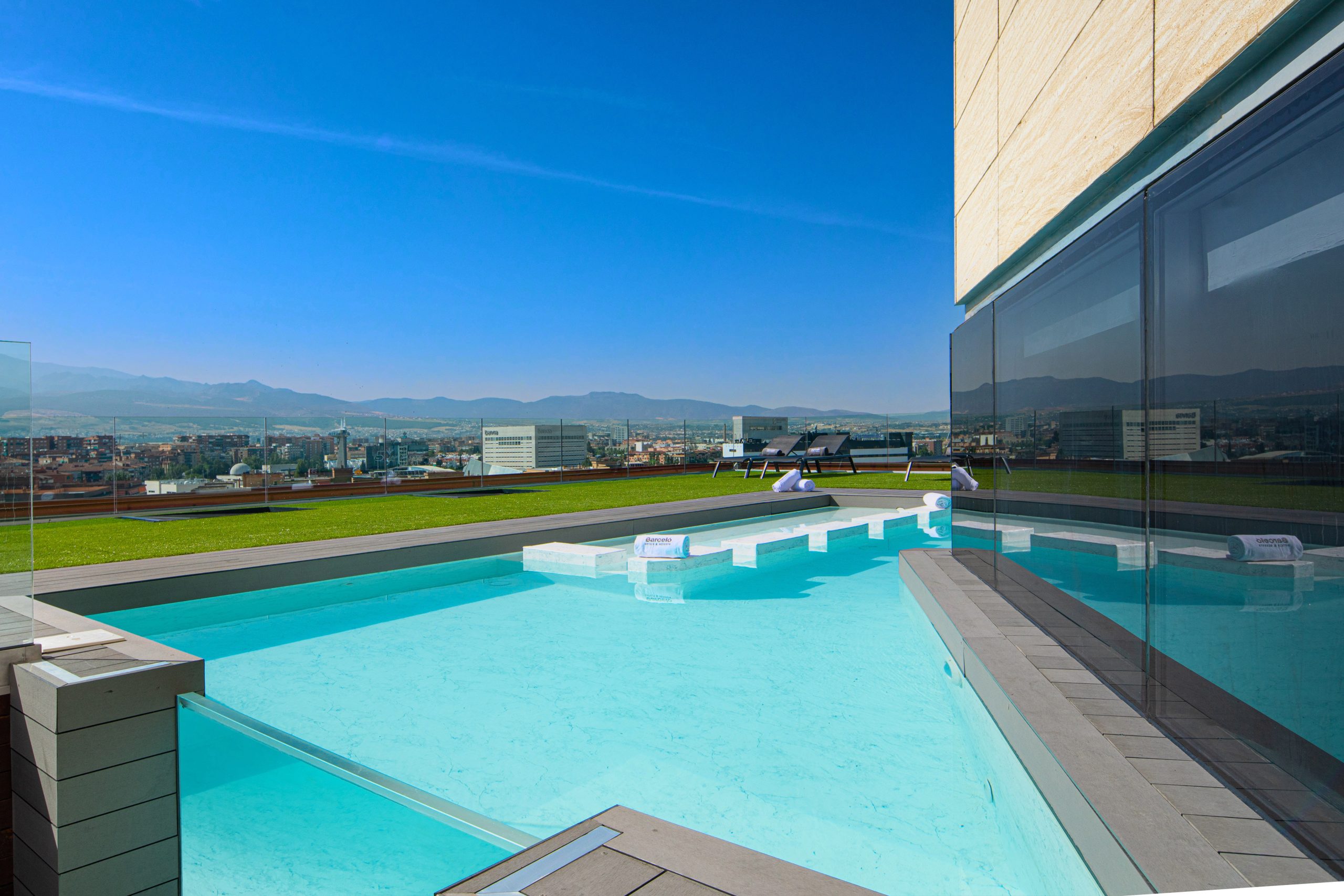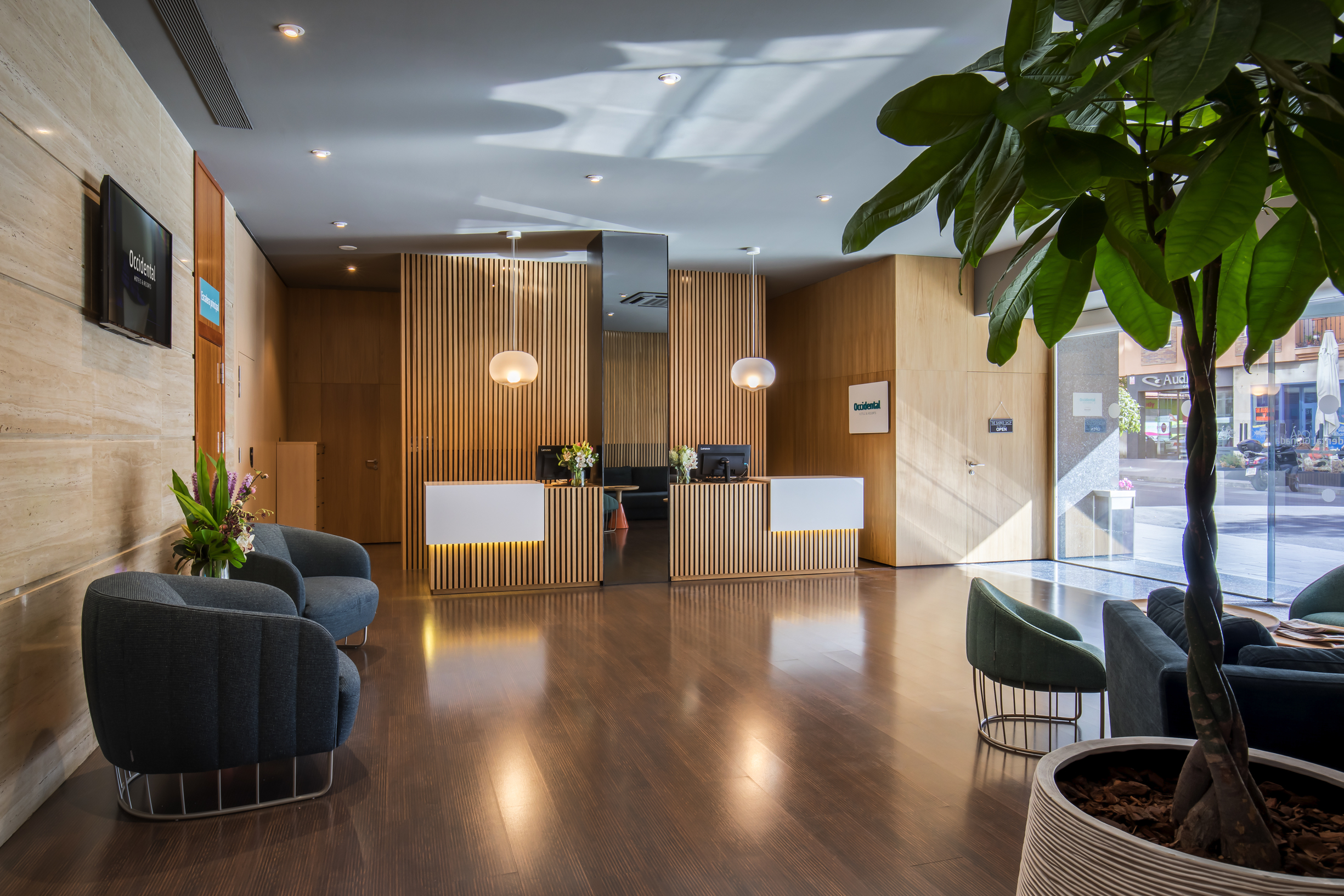Sacromonte Abbey, together with the Alhambra and the Cathedral, is one of the essential pillars for understanding the reality and history of Granada and is also one of the musts when visiting the city where the poet García Lorca was born. Located on Valparaíso hill, on the banks of the river Darro and crowning the neighbourhood after which it is named, this Abbey has more than 400 years of history.
It has been one of the main spiritual and cultural centres in Andalusia and even today, in the 21st century, it is still a forward-looking space full of life since it continues to foster research, culture and art, and is the custodian of a valuable historical, documentary and artistic heritage.
History of Sacromonte Abbey
The history of Sacromonte Abbey dates back to the end of the 16th century. Specifically, it was in 1595 when the remains of Saint Caecilius, the first bishop of the Roman city of Iliberri (later Granada), and of other religious persons who suffered martyrdom during Nero’s persecutions, were found in ovens dating back to Roman times. In a spontaneous manner, the people of Granada began making pilgrimages to this hill, until the bishop of Granada, the humanist Pedro de Castro, decided to build an abbey there.
Together with the remains of Saint Caecilius and his colleagues, the so-called ‘lead books’ were found, written in strange Arabic on lead plates, which tell legendary stories about the apostolic and Arabic origin of Christianity in Granada. The texts are preserved as a treasure with great value since they contain messages that call for an encounter between cultures and religions.
At the end of the 19th century, the canon of the Abbey, Andrés Manjón (1846-1923), founded the Ave María Schools to educate the children most in need who lived in the Sacromonte area, especially gypsy children.
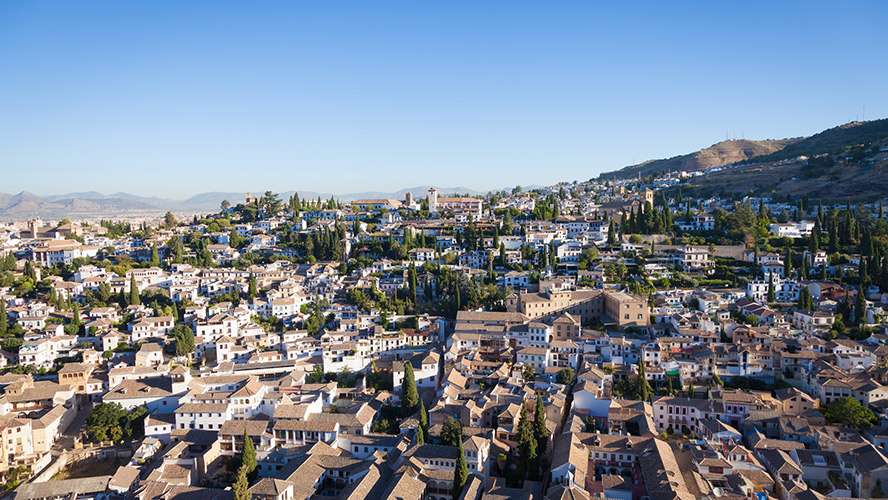
What to see during your visit
Sacromonte Abbey has many places of interest so that you can enjoy an essential monument with centuries of history. You can start with the cloister, the only one of the four that was planned to be built and which forms an antechamber to the impressive building. You will also see the Star Courtyard, with Tuscan columns resting on semicircular arches, and a humble central fountain. Afterwards, you can continue to the Collegiate Church, a Baroque temple dedicated to the Assumption, where you can see an impressive organ and carved choir stalls. You can then go to the Holy Caves, the central part of Sacromonte Abbey, which were created after the relics of Saint Caecilius and other Christian martyrs were found. Immediately afterwards, you will see the Old School or Saint Dionysius School, which was one of the first private universities of the time, with the Venancio Blanco courtyard. At some point during the visit, you will see the fantastic marble staircase built in 1897, during the last extension of Sacromonte Abbey, which connects with the New School and leads to the neo-Gothic chapel of Saint Dionysius and its gardens.
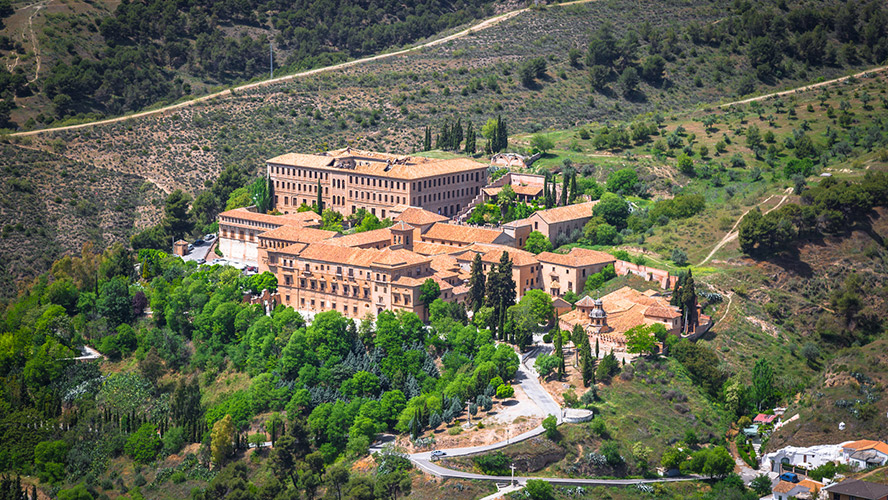
Information for visitors: how to get there, opening hours, tips and guides
Sacromonte Abbey opens from Monday to Sunday from 10.30 a.m. to 2 p.m. and from 4 p.m. to 7.30 p.m. From 4 April, the opening and closing times are brought forward by half an hour. On Sundays there is mass at 12.30 p.m. and, during that time, visits are suspended. You cannot enter Sacromonte Abbey without a guide and the entrance fee to Sacromonte Abbey, with a guided tour, is 5 euros, with discounts for certain groups. Audio guides are also available in the following languages: Spanish, German, Chinese, French, Dutch, English, Italian, Japanese, Portuguese and Russian, subject to online booking. The tour lasts approximately one hour, depending on whether you choose the General Abbey or Premium Abbey option. How to get to Sacromonte Abbey You can go up from Peso de la Harina halfway up the Cuesta del Chapiz hill, along the Camino del Sacromonte, until you reach the large stone cross next to the Holy Sepulchre hermitage. The second route starts from Haza Grande and descends along the Camino de San Antonio. You can also get to the Abbey from Plaza Nueva on the city bus line C34. The journey takes 15 minutes and buses run every 20 minutes. Remember that you cannot drive up the Camino de Sacromonte. Nevertheless, taxis are allowed






































































